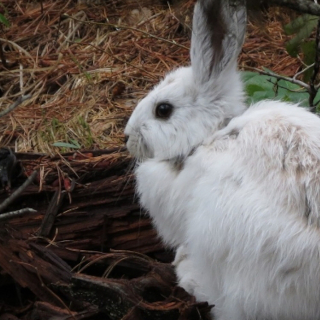Mountain Musings: Lessons from a Summer of Solo Backcountry Travel
As most of us can attest to, 2020 did not go to plan. Heading into last summer, I felt bedraggled and rudderless–my summer research plans were gone, and I did not know what I should do, let alone what I wanted to do. I felt a seemingly immovable, nearly paralyzing sense of uncertainty. I realized that I needed a challenge, something that would force me to transcend beyond my own concerns and myopathy. So, I decided to spend the summer in the Colorado Rockies, alone, linking up 14,000’ peaks.

Figure 1. On the summit of Mount Princeton, looking down the south ridge.
The reality of solo backcountry travel immediately extracts you from the concerns of daily life. When you are downclimbing a wet, lichen covered, 12’ cliff, you cannot maintain a façade. When you are your only barometer of risk, your only way to get back safely, you become focused solely on what is–not what it could be, not what you want–but what is, and how to deal with it.

Figure 2. Looking off the summit of Mount Elbert, the highest peak in Colorado (14,440’).
One day, I experienced two small snow avalanches, cliffing out, three river crossings (two of which were unexpected), and fording a beaver pond. Another day turned out to be an 18-hour venture, from 3 a.m. to 9 p.m. A different time, I ended up walking in a steep, snow-fed creek for 3 hours in the middle of the night, with an air temperature of 34ºF. Yet another venture involved being on knife edge ridge at 13,200’ with a thunderstorm coming in.

Figure 3. Looking south from Missouri Mountain.
I got battered, bruised, and bloodied by the landscape. I earned more than a handful of scars and numerous stories. At the time, I did not fully realize what I was gaining from these experiences. But over the last several months, I have come to recognize and appreciate all that I learned last summer. I gained confidence in my ability to handle myself in the backcountry, as well as other unknown and uncomfortable situations.

Figure 4. View from Huron Peak.
What I did last summer was far more valuable for me than if my original plans had worked out, and that has been affirmed both through joining the Mills Lab last fall and the research opportunities I have received for this summer. To those of you seeking field research experience, I encourage you to supplement whatever opportunities you may or may not have with your own backcountry ventures. Certainly, do not put yourself in situations that far exceed your ability levels and are unsafe; heading out solo may not be the best choice, depending on your experience level and location. But regardless of whatever form is right for you, the competencies you gain in the backcountry–being able to deal with inclement weather, fatigue, hunger, navigation, and unexpected barriers–directly translate to field research, and more broadly, life. So, get outside, be safe, and challenge yourself. You may be surprised at what you find.
-Grace Erba, Mills Lab undergrad

Figure 5. On the summit of Mount Antero, looking north toward Mount Princeton (just right of center).

Figure 6. Descending Mount Massive.
Feature Image. Ascending Missorui Mountain, looking over at Mount Belford (far left) and Mount Oxford (right of Belford, behind the ridge).
